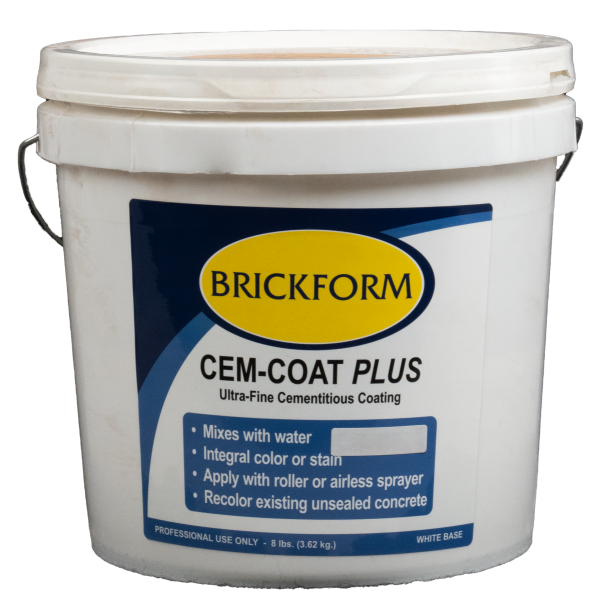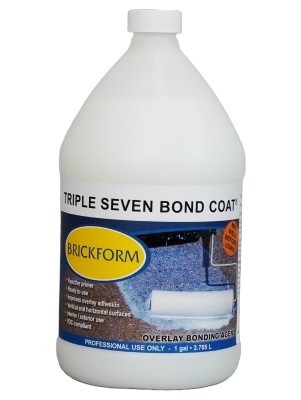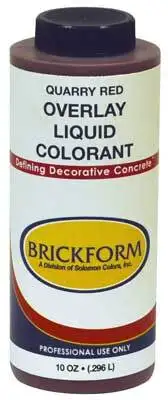7 Reasons Painting Concrete is a Bad Idea
Learn why painting concrete isn’t a good long-term solution, and discover what you can do instead.
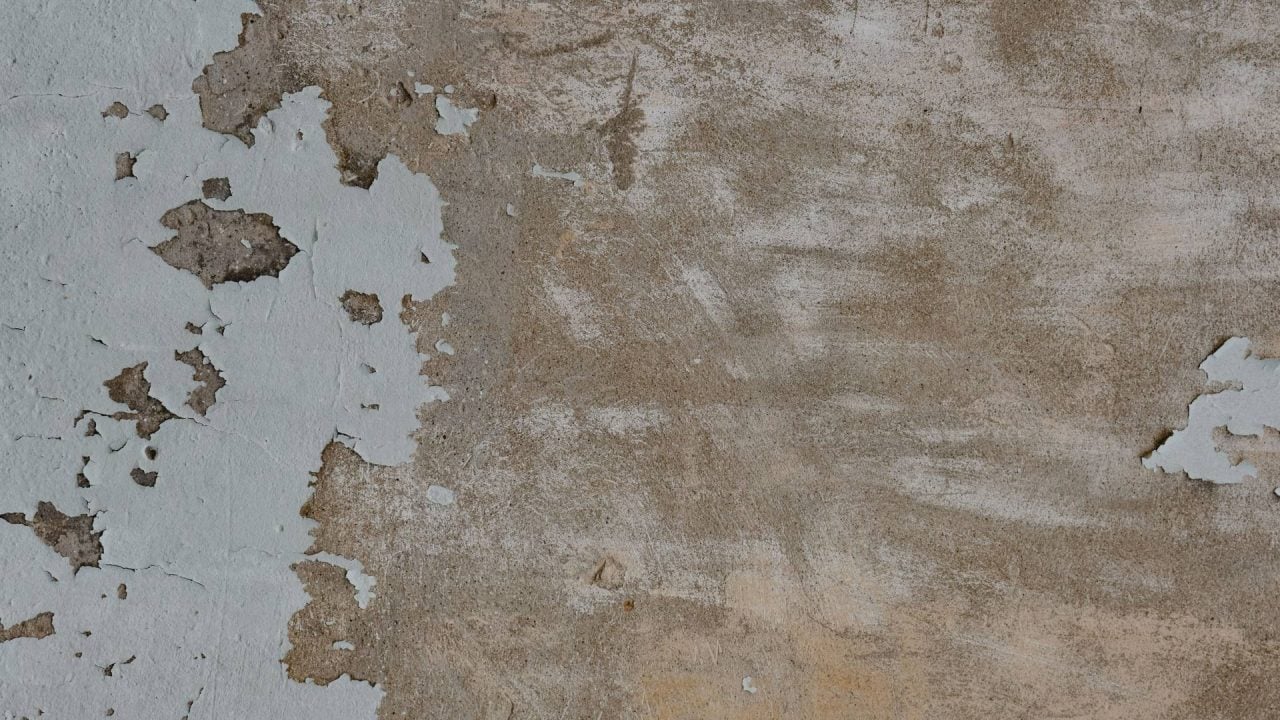
It might be tempting to consider painting concrete to add color or cover up imperfections. But is painting concrete a good idea? While it sounds like a quick and easy solution, painting concrete often leads to unexpected maintenance and wear issues.
But before you decide to take on painting concrete, it’s important to consider the practicality and lasting value. Interestingly, web data shows that many people end up searching for the phrase, “how to remove paint from concrete.” After researching reviews of a variety of concrete paint products, we’ve compiled the information to share some of the common issues people are experiencing with concrete paint. We also provide an alternative solution for recoloring your concrete.
✉ Get Expert Tips Straight to Your Inbox!
Sign up for our newsletter for exclusive tips, techniques, and updates.
Common Problems with Painting Concrete
- Paint can chip and peel over time.
If you spend a few minutes reading concrete paint reviews online, you’ll see that words like “chips,” “peels,” and “flakes” pop up often. Though properly preparing the concrete surface before painting it will make the paint last longer than if you do not prepare properly, it’s not a long-term solution. - Painted surfaces are high-maintenance.
Since paint on concrete doesn’t adhere well for the long term, it’ll end up requiring additional labor and maintenance costs. Many find that they have to constantly touch up their concrete surface. In the reviews, we found comments such as “high maintenance” and “constant touch ups” because paint just can’t handle the traffic or the weather. Plus, on painted garage floors and driveways, ‘tire pickup’ is a given. - Painted concrete can be slippery.
Another issue that arises with painted concrete is that it is slippery when wet, which is a safety hazard. Comments about “reduced traction” often came up in the reviews. And adding traction grit to the paint is a possible solution that often gets overlooked by DIYers. - Painting concrete isn’t as easy as it seems.
Many assume painting concrete will be straightforward–until they’re knee-deep in the project. Those who have tried it often describe the paint as “difficult to apply” and say that they “followed instructions but still had issues.”
Prep for painting concrete requires cleaning, patching cracks, and then ensuring the surface is completely dry before painting. Additionally, painting concrete isn’t like painting a wall. Concrete absorbs paint differently, and if it’s not done right, you’ll have uneven patches and discoloration. High humidity and either too-high or too-low temperatures can prevent the paint from setting properly, too. Many say that the paint “took longer to dry than expected” or that “bubbles formed after application.” - Concrete paint can’t be customized.
The color range for concrete paint is often limited to basic shades, making it challenging to achieve unique and customized looks. Some customers end up disappointed with the color options, saying that there was a “limited selection” and that they “had to settle for a color they didn’t love.” - It can make your property harder to sell.
Painting concrete might seem like a quick fix to boost curb appeal, but it can backfire when it comes to selling your home. Potential buyers don’t want to see peeling paint. Some realtors even say that painted concrete is a drawback, and recommend stripping the paint to make the home more appealing. This way buyers aren’t deterred by the extra cost or hassle to remedy it in the future. - DIYers often use the wrong kind of paint.
While this isn’t like the other drawbacks, it is something that needs to be addressed. Painting concrete requires a very specific type of paint due to its unique characteristics. When those specific requirements are ignored, you hear complaints like “doesn’t stick,” “poor adhesion,” or “failing to bond.” People are picking paints that just aren’t meant for concrete. When the paint’s not right, it’s not going to cling to that concrete like it should.
Related post: Concrete Paint Problems? Try Cem-Coat® Plus Instead
3 Reasons Brickform Cem-Coat is Better Than Paint
At Brickform we want you to love your concrete. That’s why we offer the best options for giving your concrete a facelift. Rather than paint, we suggest using Cem-Coat® Plus, which is easy to apply like paint, but performs much better. In comparison to paint it has a longer lifespan, its color can be customized to your liking, and it was formulated by experts who know concrete.
The biggest benefit is longevity.
CemCoat and paint go down the same and stick through mechanical adhesion. But Cem-Coat has a cement binder so it lasts longer and is more resistant to abrasion. “The thing that is nice about using Cem-Coat is, as its name implies, it is a cement-based product. So this product is mixing up with polymers and a real flour-like aggregate to create a nice abrasion-resistant surface. A lot of times you don’t get that when using latex paints or other paint types. They may be designed for concrete, but without the cement content it’s not going to have the abrasion resistance that Cem-Coat does,” says Brickform technical representative John Reynolds.
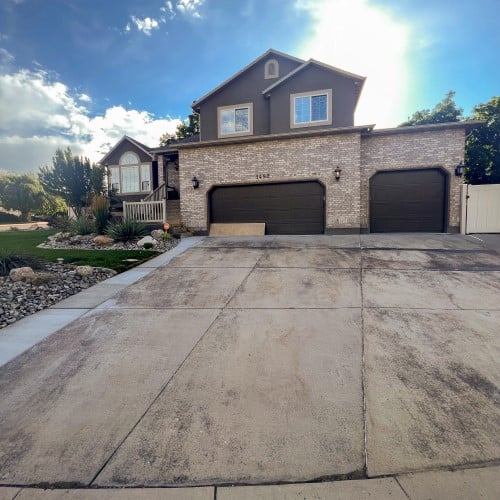
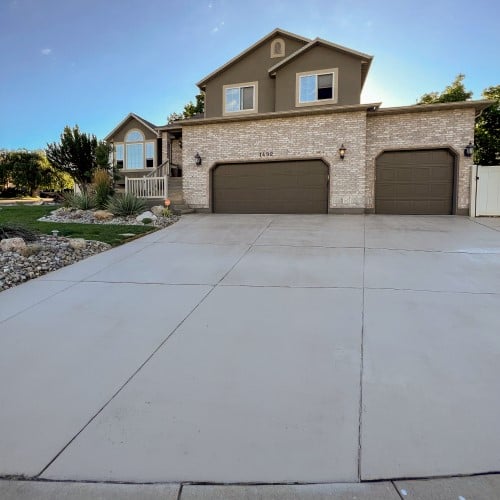
When properly applied and sealed, Cem-Coat Plus will look great for much longer than traditional paint, which may require reapplication after only a few years. For added durability, use Triple Seven Bond Coat as a primer for Cem-Coat. In addition to the mechanical bond, this achieves a chemical adhesion, offering even better abrasion resistance and a longer life. You can’t do that with paint.
CemCoat offers more versatility.
Cem-Coat provides users with unmatched versatility, allowing them to customize the finish with staining or antiquing and select their preferred sealer. “It’s compatible with Antique-It and ARTesian Stain. Plus, if you want a glossy finish, put a glossy sealer on it. Or if you want a matte finish, then you can do that,” suggests Brickform’s Antonio Thomas. You can also apply Brickform Safety-Seal to enhance traction where needed.
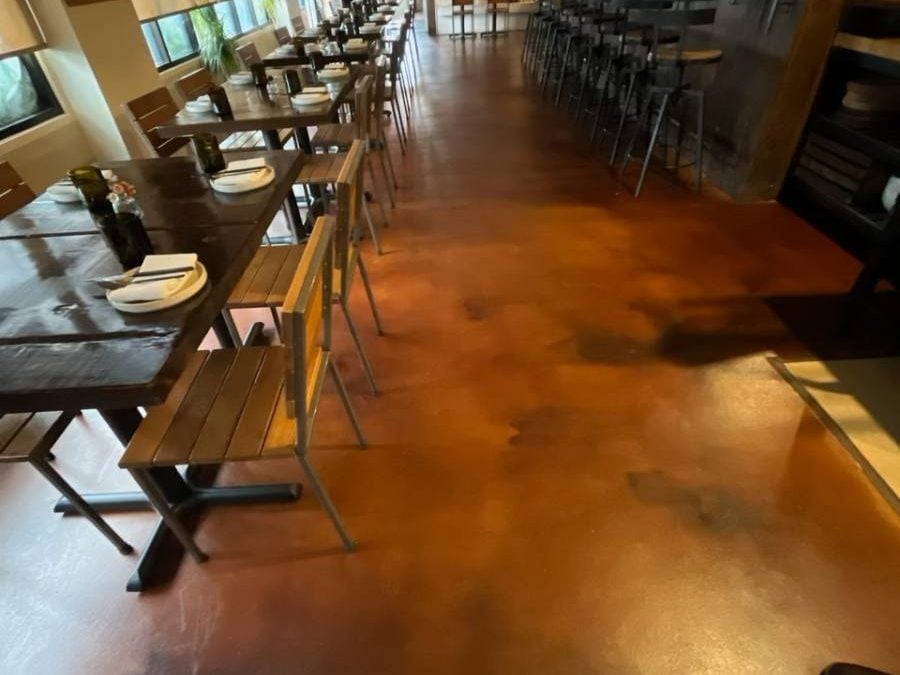
BRICKFORM KNOWS CONCRETE!
“Our team of industry experts has tested plenty of products, both good and bad. We know what we’re doing, and if you follow our videos and TIS so will you,” explains Thomas. “The bottom-line is Cem-Coat is a lot more durable than paint, because we designed it to be that way.”
To sum it up, painting concrete may seem like a quick and easy solution, but it comes with several disadvantages that make it a bad idea. Consider alternative options, such as a cement-based recoloring product like Cem-Coat, for a more durable and aesthetically pleasing result.
Want more from Brickform? Subscribe to our newsletter for our latest blog posts, videos, training dates and more!
See More
